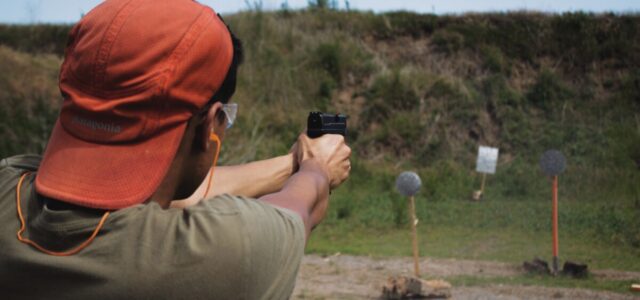

Fatal shooting on ‘Rust’ set raises questions on gun safety in film industry
EntertainmentFilmNews Nov 11, 2021 Emma Harris

A shooting on a movie set in New Mexico that left one person dead and another injured has prompted the film industry to ask whether the use of real weapons during production is necessary, or safe.
The incident happened on the set of the movie, ‘Rust’ when actor Alec Baldwin fired a prop gun that contained live rounds, killing cinematographer Halyna Hutchins and injuring the director, Joel Souza.
In both the U.S. and Canada, laws exist controlling the use of firearms on a film set, with Ontario productions subject to a long list of rules and regulations.
Both countries prohibit the presence of live rounds, meaning those containing gunpowder, on a film set.
Both countries also require the presence of a highly-trained professional armourer or gun specialist to provide training on the safest way for a prop gun or any type of weapon to be used on a set
Ontario film productions are subject to additional requirements not typically seen on U.S. sets. Jake Howard, lead clerk at the Movie Armaments group (MAG), says in order to even use a firearm on a set in Ontario, there is an extensive process that occurs before filming — something that is often overlooked in the U.S.
MAG is a professional armoury service that provides equipment and expertise on firearms and other military and law enforcement equipment to the film industry. Howard has been working with the company for three years and deals with everything in the front of house.
Howard and his team begin by going through the script with directors and producers to see how and when the gun will be used. They then have to determine how the scene is going to be blocked off from others. With that information, they decide which blank rounds should be used and how to pull that off as safely as possible.
The process is extremely lengthy but necessary, Howard says. He believes with the regulations he follows it would be impossible to have something happen like the accident on the Rust set.
“Most of the time they are in fact real guns, but they just don’t fire live ammunition. In movies they should, always always, always be firing what are known as blanks which is designed and shaped like a real weapon cartridge but there is never anything solid coming out of the gun, it’s like a release of pressure coming out the barrel of the gun,” he said.
He said the incident was extremely irresponsible and that those responsible for the movie production “cut corners” on the important things. Here in Ontario, having live rounds on a movie set is illegal, but in the U.S., he says, sometimes no one really checks.
The accident on ‘Rust’ shook up all of those in the industry, causing MAG and other armoury groups to be looked at more closely for their safety measures.
Actors throughout North America were also shaken up by the tragedy. Brian Janson, an actor in Toronto, said he completely puts blame on the armourers and the producers.
“I also blame the producers for cutting costs and hiring somebody so inexperienced, like you can have people on sets that are learning but not in a position like that – when dealing with safety, you can’t cut corners,” Janson said.
Janson said he hasn’t had much on-set experience as yet when it comes to using guns or being around them but he has always been skeptical and it definitely makes him more apprehensive. “I’d want to be triple checking (the weapon), discussing it with the armourer and dealing with only them and make sure it is completely safe,” he said.
Janson said he would not work on a movie set if these measures weren’t in place.






